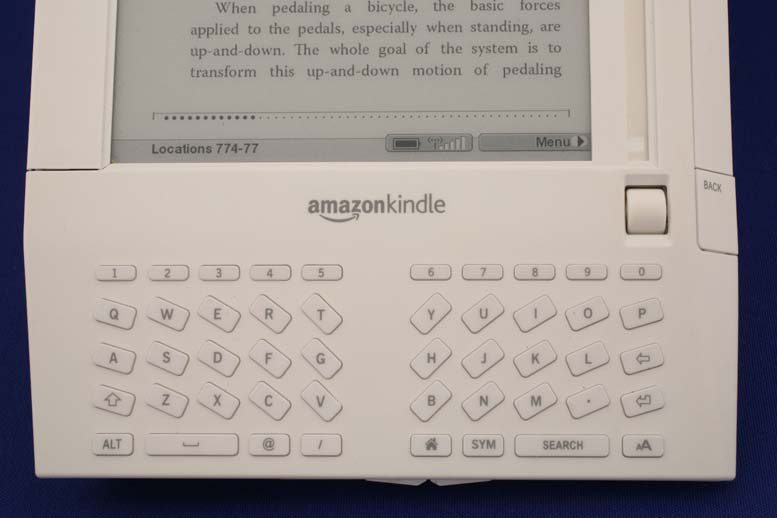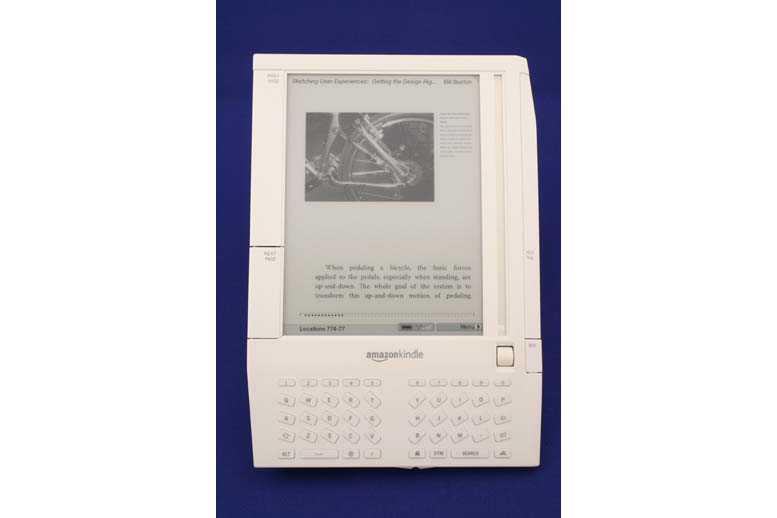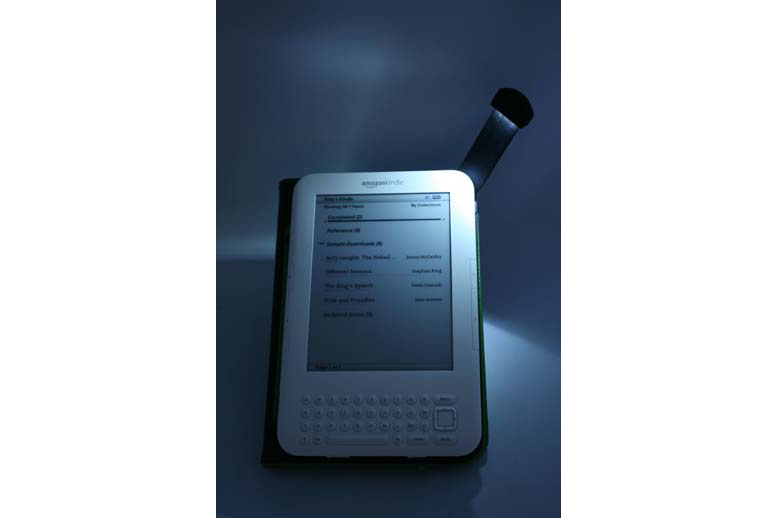|
Kindle (G1)    Bill Buxton's NotesFirst released in November 2007, the Kindle used the same e-ink reflective B&W display as many others, such as the Sony PRS-500. However, it differed in many other ways. The bezel below the screen had a small physical QWERTY keyboard incorporated into it that enabled one to annotate the document being read. This was accomplished by attaching what amounted to electronic sticky notes to the text. These could be hidden or revealed. There was also a search capability which enabled one to type in search terms (which may be in the text itself, or, in your personal "sticky notes" attached to it. You could also use the keyboard to look up words in the built-in dictionary. The Kindle also had a wireless connection that let one order e-books pretty much anywhere and anytime in the USA, and have them delivered instantly. This was facilitated by the tight integration with Amazon's on-line book store. This device illustrates that the quality of the user experience is not just about the device itself; rather, how it is integrated into the larger ecosystem of reading – things like annotation, browsing titles, looking things up, and purchasing. Because of this larger integration, the Kindle family of e-readers rapidly came to dominate the e-reader market. Hence, prior to the release of the Apple iPad in 2010, I suspect that few imagined that Amazon's position in this space was vulnerable. I think the lesson here is, for those who have market dominance, never assume that you can't be challenged, and quickly. And, for those not dominant, remember that with well executed innovation, you can obtain a strong foothold in a market that has an established dominant player. Note that I didn't say that it would be easy. But it can be done. To add the next chapter on this moral, it is worth noting how Amazon responded to the challenge of the iPad. First, they played to their strength, namely, the fact that you could read outdoors, such as at the beach – something that you cannot do on an iPad. At the same time, they improved the quality of the e-ink display. But they also kept true to their core value: having the design augment the quality of the larger reading experience. My favourite example is a seeming small detail, namely, enabling power to be carried over to the optional leather binder in order to provide a built-in retractable reading light. As Gustave Flaubert and Ludwig Mies van der Rohe are both purported to have said, God is in the details. Bill Buxton Device Details
Company: Amazon |
Year: 2007 |
Original Price (USD):
$399 |
